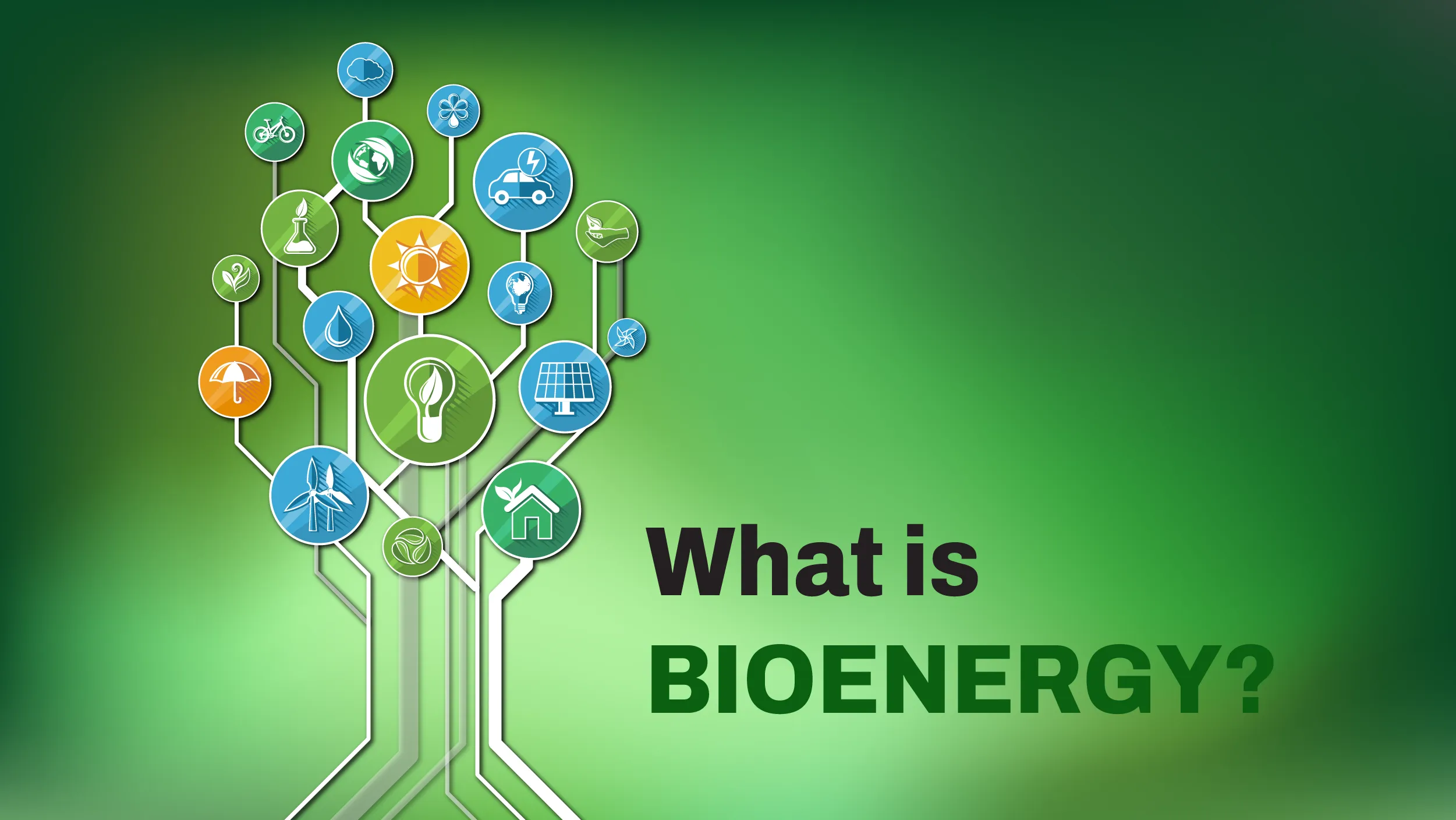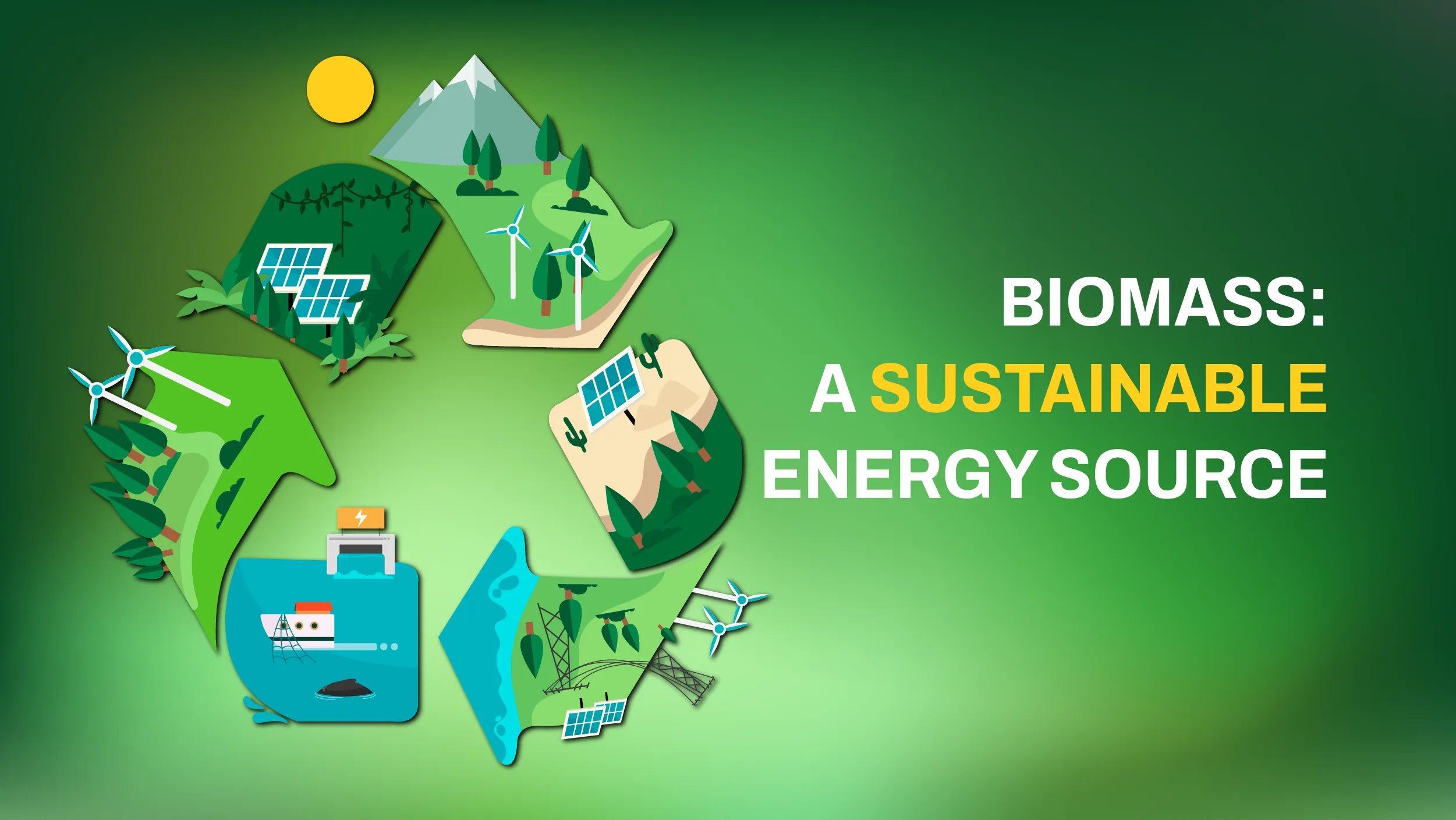The entire world is seeking opportunities to embrace sustainability in their daily lives to have a cleaner future. Bioenergy is one of the potential alternatives to fossil fuels that is being explored to reduce the impact on the environment. This blog explores the definition, benefits, and challenges revolving around bioenergy.
What is Bioenergy?

Bioenergy is an energy source derived from organic materials like plants, it is popularly known as biomass. It encompasses the carbon absorbed by plants during the photosynthesis process. When this biomass is utilized to generate energy, the carbon released during the combustion process is returned to the atmosphere. As a result, bioenergy is a leap forward in zero-emission fuel.
Benefits of Bioenergy Industry
Abundant renewable energy sources like bioenergy can contribute to a reliable, more secure, sustainable, and economically viable future. The following are the benefits of using energy from organic waste:
- Providing domestic clean energy options
- Decreasing reliance on fossil fuels
- Creating jobs in the sector
- Boosting rural economies.
BIOMASS: A SUSTAINABLE ENERGY SOURCE

Biomass is a sustainable energy resource obtained from plant and algae-based materials, including:
- Urban wood debris
- Food scraps
- Crop residues
- Forest by-products
- Purpose-grown grasses
- Woody energy plants
- Microalgae
Biomass energy is a flexible renewable energy source that can be transformed into liquid transportation fuels comparable to fossil fuels, including gasoline, jet fuel, and diesel. Bioenergy technologies facilitate the conversion of carbon from biomass and waste materials into low-emission fuels for vehicles, aircraft, and ships, as well as bioproducts and renewable energy.
Also Read: Renewable Energy Solutions: A Comprehensive Outlook for 2024
Energy For Transportation: Biofuels
Biomass is a type of renewable energy resource that can be transformed into liquid fuels, which can be used in transportation. It is also referred to as biofuels. They encompass biodiesel, cellulosic ethanol, and renewable hydrocarbon “drop-in” fuels. Ethanol and biodiesel are the two common types of biofuels that are widely used today. This type of biofuel can be utilized in airplanes and the majority of vehicles that run on the road. Renewable transportation fuels that match the performance of petroleum fuels help reduce the carbon intensity of our vehicles and airplanes.
Energy For Heat And Electricity: Biopower
Biopower technologies transform renewable biomass fuels into electricity and heat, leveraging strategies like the ones used with fossil fuels. Bacterial decay, transformation to a gas or liquid fuel, or burning are three ways to extract the energy stored in biomass to generate biopower. Biopower can reduce the reliance on carbon-based fuels in power plants, thereby decreasing the carbon intensity of electricity production. Unlike certain intermittent renewable energy sources, biopower offers greater flexibility in electricity generation and improves the reliability of the power grid.
Everyday Commodities Derived From Biomass: Bioproducts
Similar to petroleum, biomass is a versatile source of energy. In addition to being converted into biofuels for vehicles, biomass can also act as a renewable substitute for fossil fuels in the production of bioproducts like plastics, lubricants, industrial chemicals, and other items typically made from petroleum or natural gas. Integrated biorefineries, which operate similarly to traditional petroleum refineries, can produce both bioproducts and biofuels. This dual production approach enhances efficiency, cost-effectiveness, and integration of U.S. biomass resources. Moreover, revenue from bioproducts adds value, improving the economics of biorefinery operations and making biofuels more competitive in cost.
Challenges in Bioenergy
● Uncertain Policies
Bioenergy faces several significant challenges, including policy uncertainty and complex institutional structures. Currently, bioenergy development is not receiving sufficient policy focus. Crafting bioenergy policy often involves multiple government departments and cross-sectoral actors. To build investor and project developer confidence, governments should establish a long-term bioenergy strategy with clear targets and coordinated cross-sectoral efforts. Implementing mandates for bioenergy consumption and banning fossil fuel use can also boost market demand.
● Economic Barriers
Financial and economic obstacles include fossil fuel subsidies, high costs, and limited access to affordable financing. Without addressing the negative impacts of fossil fuel consumption, many bioenergy options remain more expensive than fossil fuels. Financial and fiscal support measures are essential to make bioenergy production and usage profitable for businesses and affordable for consumers. This includes phasing out fossil fuel subsidies, introducing carbon pricing policies to correct market distortions, offering tax reductions or grants, and facilitating affordable financing.
● Lack of Necessary Infrastructure
Another major barrier is the low level of technology readiness for new bioenergy technologies, such as biomass-based aviation fuels and biomass for high-temperature industrial processes. The lack of necessary infrastructure, like onsite biomass storage and adaptations to natural gas grids for biomethane, exacerbates this issue. Policy support for innovation through research, development, and demonstration can improve technology readiness and accelerate commercialization.
● Poor Supply Chain
Weak supply chains are also a significant challenge, including issues with unstable feedstock supply, a shortage of qualified workers, and sustainability risks. Regulations on quality control and standardization can enhance product quality and operational efficiency. Training, education, and capacity building can improve workers’ skills in designing, installing, operating, and maintaining bioenergy systems. Additionally, a context-based sustainability policy framework with appropriate measures is urgently needed to ensure best practices.
● Lack of awareness
Less awareness about bioenergy products and their benefits can hinder stakeholder engagement. Public campaigns and information-sharing initiatives can increase awareness among the public and businesses. Providing accessible information on the availability and location of bioenergy resources (e.g., agricultural and forestry residues, organic waste) and infrastructure can help project developers identify suitable feedstocks and optimal project locations.
In a Nutshell
Biomass holds substantial potential for enhancing energy supplies in densely populated countries experiencing growing demand, such as Brazil, India, and China. It can be used directly for generating power or heating or transformed into oil or gas substitutes. Liquid biofuels are an easy renewable substitute to gasoline and are predominantly utilized in the transportation sector.
Brazil is a global leader in liquid biofuels and boasts the largest fleet of flexible-fuel vehicles, which can operate on bioethanol. Bioethanol is an alcohol primarily produced through the fermentation of carbohydrates from sugar or starch crops like corn, sugarcane, or sweet sorghum.




